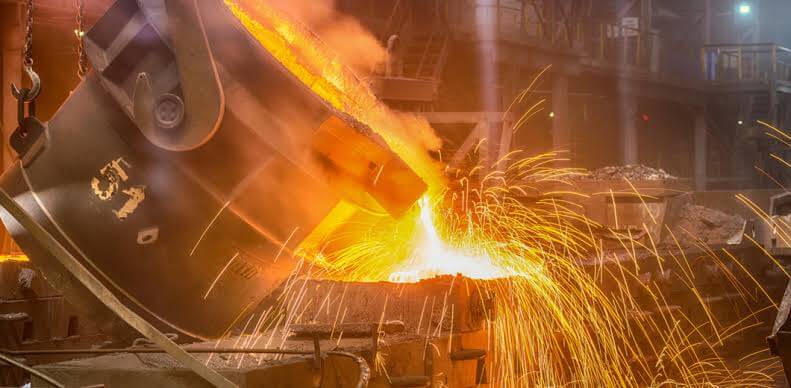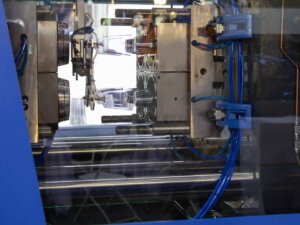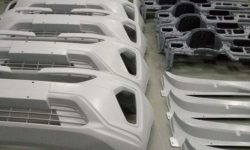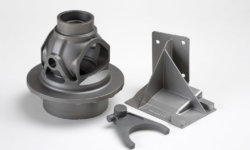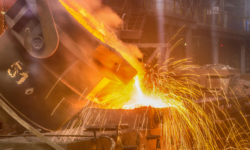Pressure die casting & invertment casting is not typically considered a rapid prototyping process. It requires costly equipment and a high level of expertise, and is generally suited to large quantities of metal parts. It is, in many ways, the metal equivalent of injection molding, another process favored for mass production over short-run or prototyping.
That being said, 3ERP is not your typical rapid prototyping company. Over the years, we noticed an appetite amongst our customers for low-volume pressure die casting, so we established partnerships with a handful of casting companies in order to offer professional casting services — even in very low volumes. The response has been overwhelmingly positive.
The transformation of die casting into a metal rapid prototyping process is a game changer for product designers, who can now order cast metal parts as easily as machined parts. This article discusses some of the main advantages and possible applications of rapid metal casting, the only rapid prototyping solution for metal casting.
Why choose rapid metal casting?
When making a prototype with rapid metal casting, a product designer can benefit from two unique sets of advantages.
The first set of advantages concerns the metal casting process itself. As an example, pressure die casting is a manufacturing process that uses a mold cavity to create parts from molten metal. It is generally a very expensive process, because specialist equipment is required. However, its benefits are significant.
One of the advantages of pressure die casting is its economy of scale. Unlike CNC machining, die casting is most cost-effective when ordering in large volumes. That’s because a mold cavity can be used many times to create many units of a part, with the cost-per-unit gradually decreasing as the order size increases. This is one of the characteristics it shares with injection molding, which also has high startup costs but a low subsequent cost per unit.
Another advantage of pressure die casting is its ability to fabricate very large metal parts such as automobile engine blocks, camera chassis and floodlight housings that would be difficult to machine from a metal blank. The process also produces an excellent surface finish, dimensional accuracy and tensile strength.
Advantages of pressure die casting:
- Cheap at scale
- Large parts
- Good surface finish
- High dimensional accuracy
- High tensile strength
The second set of advantages concerns the rapid prototyping aspect of rapid metal casting. Customers using our rapid metal casting services not only reap the rewards of the die casting process, but can also get their parts made at a speed, volume and price point usually associated with low-cost prototyping processes.
A major advantage of rapid metal casting is how it gives product designers a final-stage prototype that may be near-identical to the finished part. Since die casting is a professional process used for end-use parts, rapid metal casting is one of the most representative prototyping services available for such parts. It is prototyping convenience coupled with end-use quality.
Similarly, rapid metal casting gives engineers the ability to mechanically test prototypes of soon-to-be cast products in a more accurate manner. A rapid cast engine block prototype, for example, can be put through its paces in the factory, giving an accurate picture of how the final cast part will perform.
Combining die casting with rapid prototyping also allows businesses to benefit from other aspects of rapid prototyping. First, there’s the speed and convenience. And with 3ERP, your cast metal prototypes can be expertly finished with our CNC machining centers, adding details, engraving or other features.
Advantages of rapid metal casting:
- Available in small quantities (50+)
- Fast turnaround
- Professional process
- Representative prototypes
- Combine with CNC or surface finishing procedures
Ultra-low quantities with investment casting
It can be a headache for designers when one or just a few casting parts are required to verify the design of a part — especially when testing its mechanical properties.
One possible solution is 3D printing. As DMLS and SLM are getting more and more popular, 3D printing metal parts is no longer very expensive. Additionally, more materials are becoming available: you can get your parts 3D printed in aluminum, steel, stainless steel, titanium, etc. The problem, however, is that the mechanical properties of a 3D printed prototype will never match the finished part 100% due to the different manufacturing processes. That’s why engineers so desperately want to make real casting parts for mechanical testing.
None of the major casting companies are willing to make one-off cast parts, since they are set up for mass production. It is not convenient or cost-efficient for them to create low-volume wax patterns at all. But that’s where 3ERP comes in. We are able to prepare the wax patterns using 3D printing, and when we deliver them the wax patterns to the casting companies, it becomes an easy job for them.
When making 20 to 50 cast parts, things are a little different. It is costly to print more than 20 wax patterns, and it is not yet cost-efficient to make an aluminum mold for the wax. So what is the solution for this kind of order size? Again, 3ERP has the answers. We can make a master either with 3D printing or CNC machining, then create silicone molds with the master. 20 to 50 wax patterns can then be completed with the vacuum casting process.
For a few hundred cast parts or more, tradition metal casting companies are more than happy to accommodate a customer’s needs. However, it is still difficult to identify companies that are reliable in term of quality. We believe we have identified the most reliable manufacturing partners on the market in this domain.
Applications of rapid metal casting
Rapid metal casting can be used to create prototypes and short-run parts in several industries. Some of the most common applications of rapid metal casting include:
Automotive
Die casting is regularly used to create metal parts for automobiles, and rapid metal casting allows automotive companies to obtain and test prototypes for new vehicles.
Cast metal automotive parts include:
- Engine blocks
- Cooling fans
- Fuel caps
- Truck/bus air valves
- Gear shifters
- Headlamp head sinks
- Gear boxes
- Pedals
Medical
The superior strength and surface finish of die casting makes the process suitable for several medical and healthcare products, which can be fabricated in small quantities with rapid metal casting.
Cast metal medical parts include:
- Pacemakers
- Hospital bed parts
- Stethoscope housings
- Monitors
- Dialysis equipment parts
- Oxygen pumps
Electronics
Mass-produced parts for consumer electronics are frequently made with the die casting process, and rapid metal casting is an effective way to prototype electronic parts or create short-run orders of specialist electronic products.
Cast metal electronics parts include:
- Tablet housings
- Printer couplings
- Headphone housings
- Smart watch clasps
- Camera chassis
Contact 3ERP today to discuss your options for rapid metal casting.
